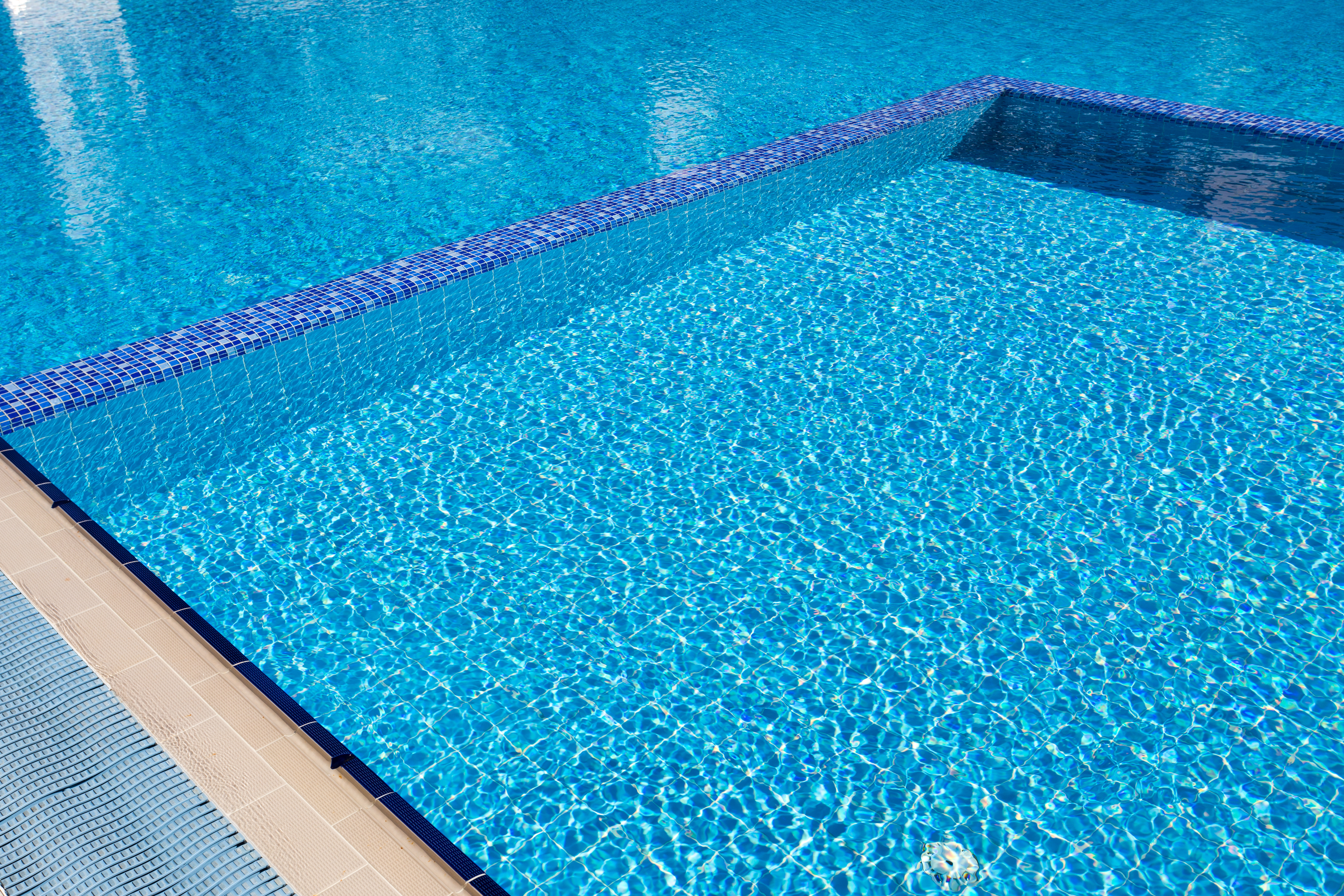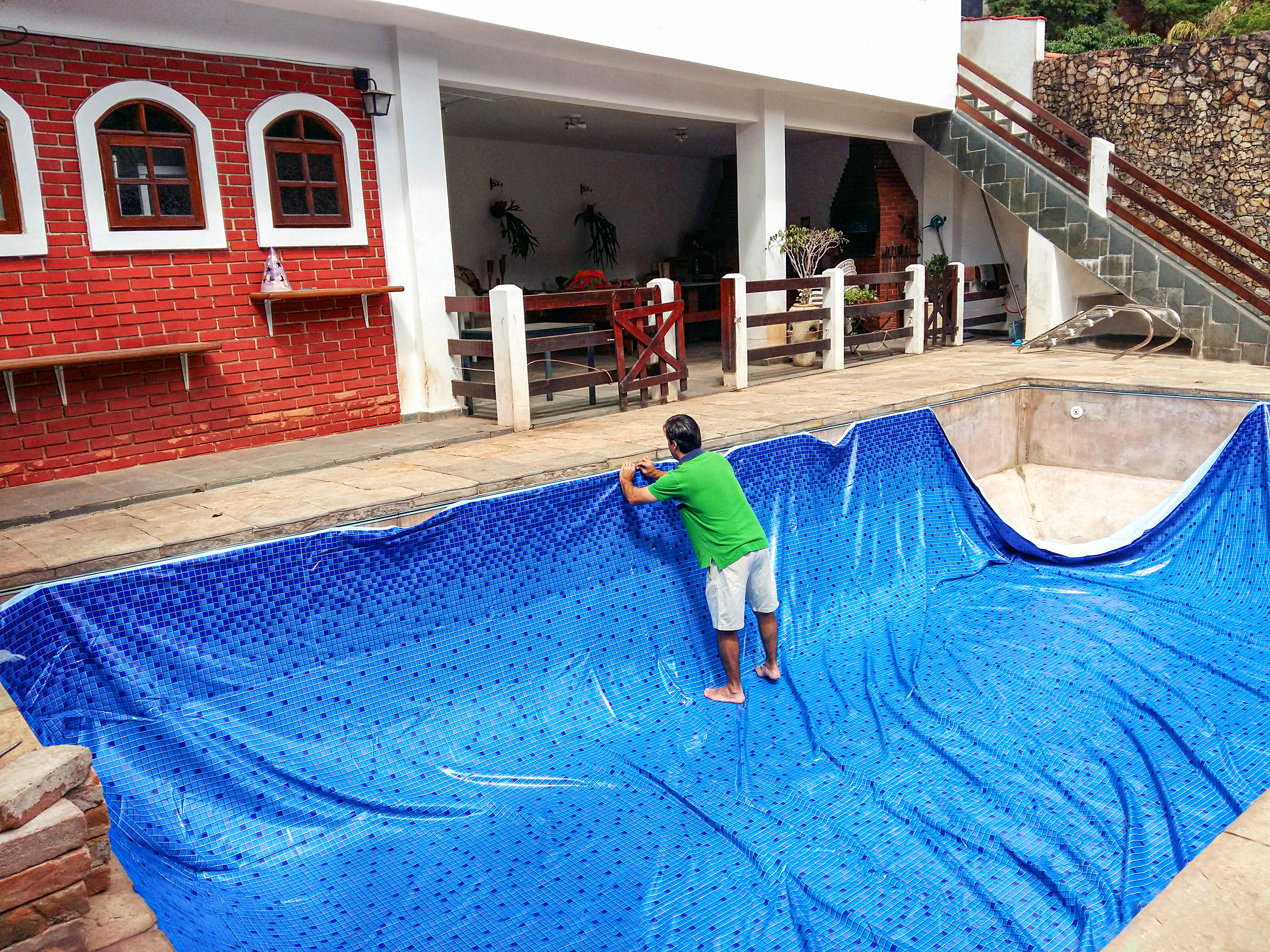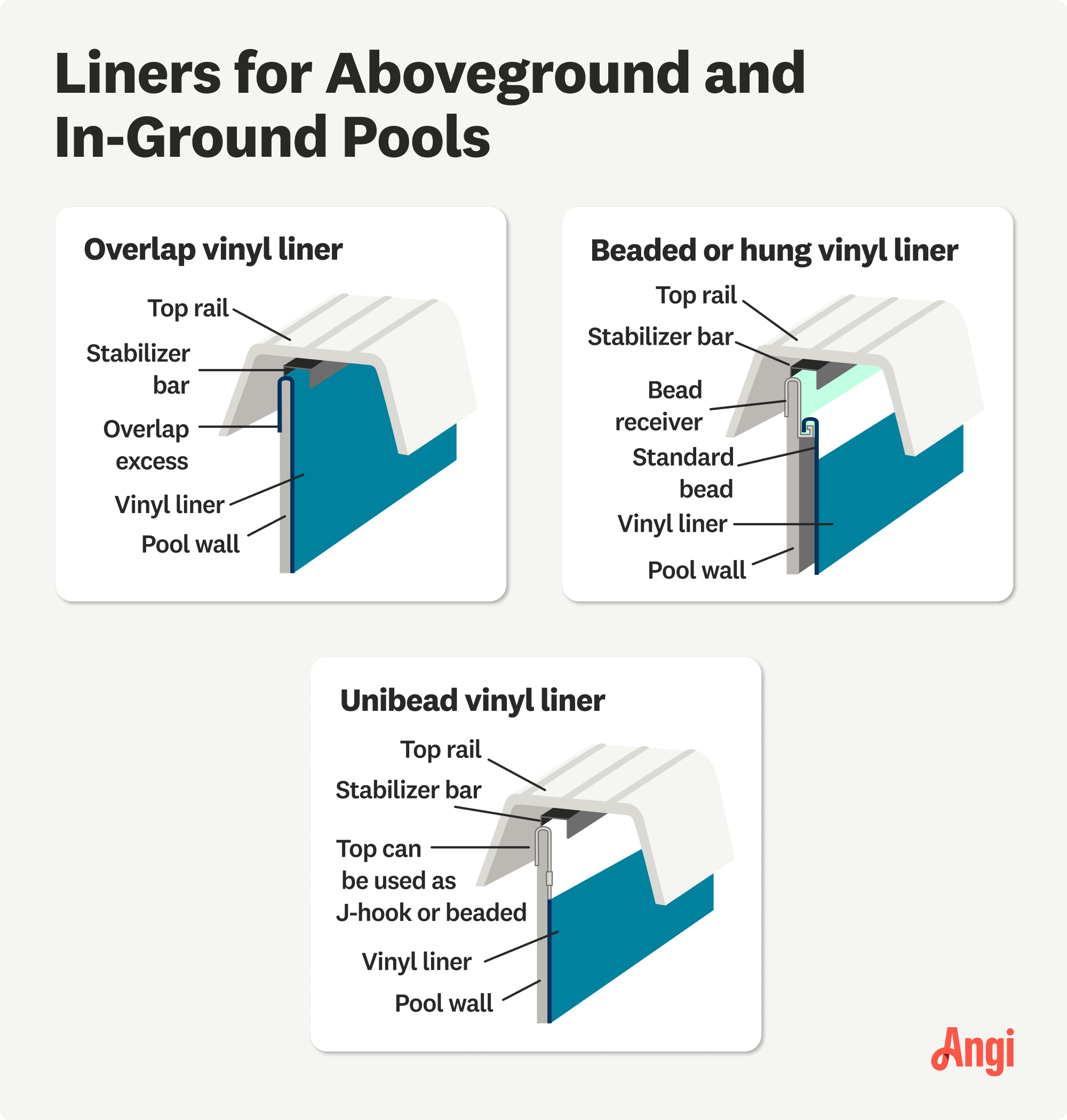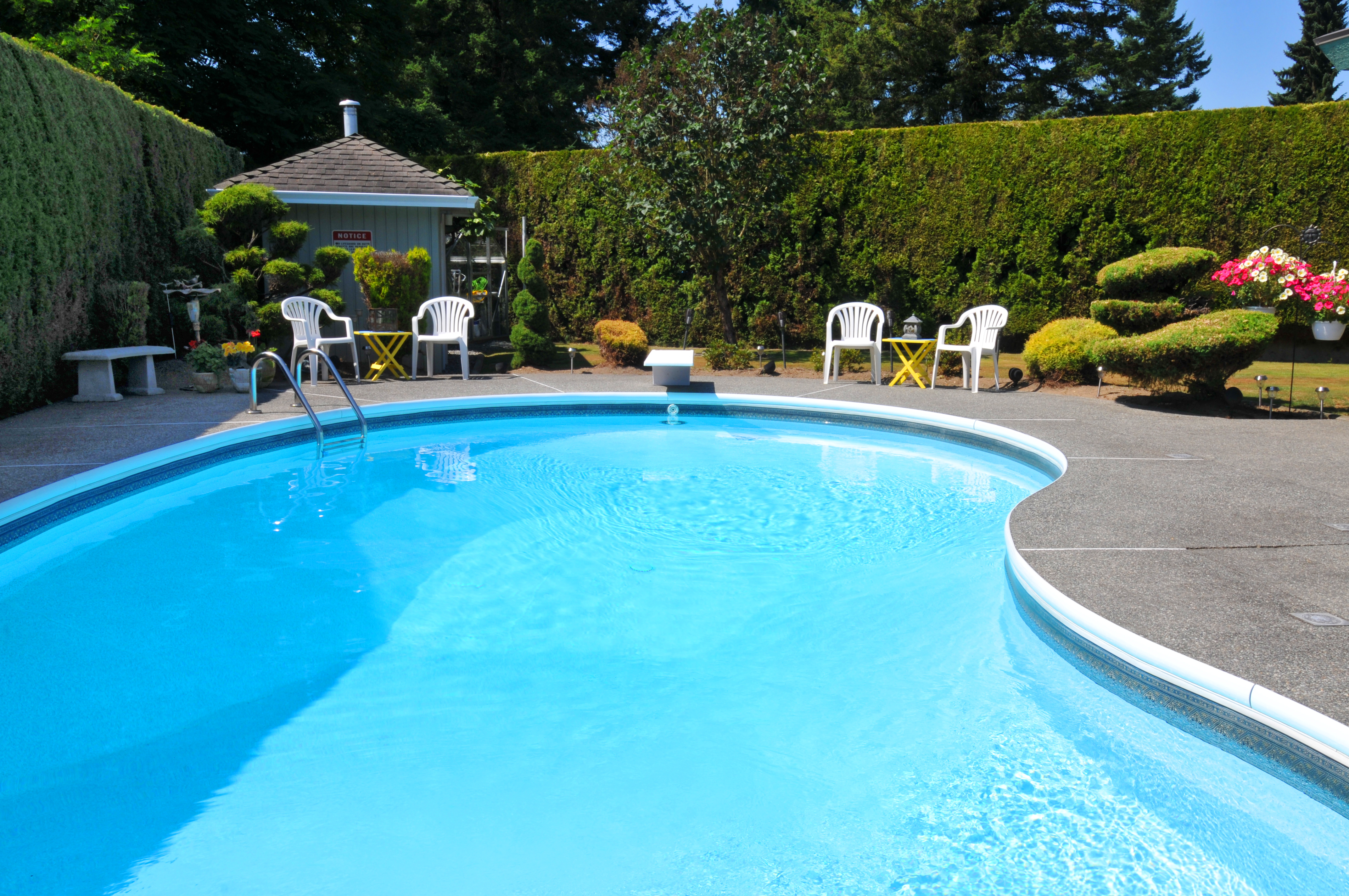
If you’ve been considering installing a new pool in the Buckeye State, this guide will help you understand inground pool costs in Columbus.
Pool liner replacement in Kansas City costs $2,207, on average, and ranges from $1,344 to $3,166. A professional can provide a more accurate quote for your project.


The size, shape, and type of pool you have are the biggest cost factors to consider.
In-ground pools are more than twice as expensive to reline as aboveground pools.
Consider investing in a thicker liner for a longer lifespan and better resistance to the city's extreme temperature swings.
Antimicrobial liners are a good investment, as they help reduce the growth of bacteria and algae promoted by the area's rainfall.
Pool liner replacement costs in Kansas City average $2,207, and most projects total between $1,344 and $3,166. Your price will depend mostly on the size of your pool and whether it’s in-ground or aboveground. Consider investing in a thicker liner, as it will last longer and resist cracking with the extreme temperature swings through the seasons in Kansas City.
Below are all of the factors you’ll need to include in your budget for a new pool liner.
You could pay as little as $500 for a new pool liner in Kansas City, or your total could climb up to $4,000. A few factors will determine where your price falls within this range.

Pool liner replacement in Kansas City costs an average of $5 per square foot, so larger pools will always cost more to reline. Measuring your pool’s dimensions and using this cost as a baseline is a good place to start to get an estimate. The average lot size in Kansas City is below the national average. This means there’s less space for pools in the metropolitan area, so local costs are a little below the national average.
| Pool Size (Feet) | Average Pool Liner Cost |
|---|---|
| 8x12 | $500 |
| 8x20 | $800 |
| 12x20 | $1,200 |
| 16x32 | $2,600 |
| 18x36 | $3,300 |
| 20x40 | $4,000 |
The shape of your pool can also affect costs, regardless of the size. Standard shapes and dimensions mean lower pool relining costs, as you can get more affordable stock liners. Custom shapes and sizes require more expensive, custom materials, and installing liners on curved edges and irregular shapes is more challenging, increasing labor costs.
Replacing a pool liner in an in-ground pool costs more than twice as much as replacing one in an aboveground pool. In-ground pools require more labor because they have built-in steps that make relining more challenging. You can also choose an overlap liner for an aboveground pool, which is more affordable but not an option for in-ground pools.
In-ground pools are more popular in Kansas City, where the soil has a low clay content and is relatively easy to excavate. This drives up the local average cost of pool liner replacement a bit.
| Pool Type | Cost Range |
|---|---|
| Aboveground | $500–$1,000 |
| In-ground | $1,200–$2,500 |

There are three types of pool liners to choose from, and the type you go with will affect material and labor costs. Overlap liners for aboveground pools are the most affordable and the easiest to install. Going with a uni-bead liner increases material and labor costs, and beaded liners will increase those costs even more.
Kansas City sees some extreme weather from nearby tornado activity and thunderstorms, so a beaded liner, which is the most secure, will resist shifting. However, tornadoes rarely touch down in the city, so uni-bead liners should suffice in most cases.
| Type of Liner | Cost Range | Pros | Cons |
|---|---|---|---|
| Beaded | $1,000–$2,500 | Resists strong winds | More costly |
| Overlap | $400–$1,200 | Most affordable | Aboveground only |
| Uni-bead | $800–$2,200 | Fits most pools | Difficult to install |
Kansas City sees above-average rainfall, and rain can promote bacteria and algae growth in your pool. Investing in a liner with antimicrobial properties is worthwhile and will help reduce pool maintenance costs over time.
Most pool liners are between 20 and 30 mil thick, and while thicker liners cost more up front for the materials, they also last longer. Kansas City sees extreme heat in the summer and occasional below-freezing days in the winter, and those temperature swings will reduce the lifespan of vinyl pool liners. Investing a few hundred more dollars to get a thicker pool liner that better withstands temperature changes could be worth it.
Strong winds from nearby tornadoes and storm activity can also blow debris into your pool, increasing the chance of tears. Thicker liners will resist tearing from debris better, also making them a good choice.
You’ll pay an average of $1,300 to hire a swimming pool pro in Kansas City, Missouri, to install your new pool liner, which accounts for 60% of the total cost. The cost of living in Kansas City is a little lower than the national average, meaning the labor cost is also a bit less than you’d pay in most other areas.
Kansas City doesn’t require permits for pool liner replacement, so you won’t need to worry about added permit fees.
A new pool liner can increase home value, especially if you’re installing it in an in-ground pool, which is the more desirable option in Kansas City. A clean installation done by a local pool liner installer will improve a buyer’s opinion of your home and could lead them to offer more. They should also understand that a new liner is likely to give them decades of use without the need for repairs or replacement after closing.
Given the greater desire for in-ground pools, aboveground pools may not impact home value, and they can potentially decrease it in the area. As such, a new liner in an aboveground pool may not boost home value at all.
Home is the most important place on earth, which is why Angi has helped more than 150 million homeowners transform their houses into homes they adore. To help homeowners with their next project, Angi provides readers with the most accurate cost data and upholds strict editorial standards. We survey real Angi customers about their project costs to develop the pricing data you see, so you can make the best decisions for you and your home. We pair this data with research from reputable sources, including the U.S. Bureau of Labor Statistics, academic journals, market studies, and interviews with industry experts—all to ensure our prices reflect real-world projects.
Want to help us improve our cost data? Send us a recent project quote to [email protected]. Quotes and personal information will not be shared publicly.
From average costs to expert advice, get all the answers you need to get your job done.

If you’ve been considering installing a new pool in the Buckeye State, this guide will help you understand inground pool costs in Columbus.

Need to know what pool resurfacing costs? Use this handy guide to get an accurate estimate for your project and see what factors can affect your total.

Pool inspections are crucial when buying a home with a pool, spa, or hot tub. Learn how much a pool inspection costs and how potential problems are diagnosed.

Discover the cost to install a solar pool heater, including average prices, key cost factors, and tips to save on your project.

When a murky mess interrupts your morning laps, you need to know how to clear cloudy pool water fast. These top cloudy water fixes will keep you afloat.

Your pool losing water could cost you money if it’s due to a leak. Keep reading to find out why your pool’s water level keeps dropping and what you can do.